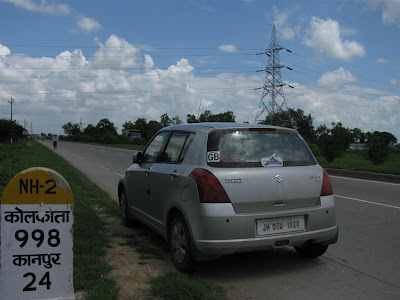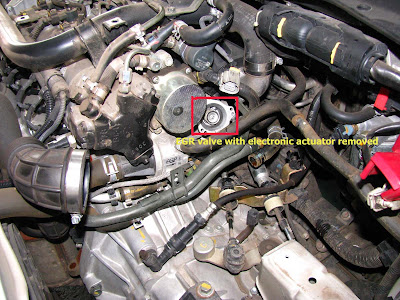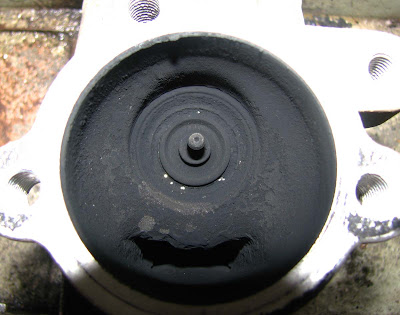
Day-1 : Drove from West Delhi (Dwarka) to Kanpur – a distance of 502 km. Left Dwarka at 4.30 AM and reached Kanpur at 1 PM. Spent about 40 minutes at Faridabad to visit someone’s house in Faridabad soon after getting out of Delhi early in the morning. Made it a point to fill up my fuel tank at Faridabad (Haryana) where fuel in cheaper than Delhi, U.P., Bihar and Jharkhand.
Day-2 : Drove from Kanpur to Jamshedpur – a distance of 883 km. Incidentally, this is the maximum distance I have ever covered in a day, driving by myself.
During this return leg from Delhi I was careful not to repeat the mistake of missing the Allahabad bypass. The Allahabad bypass is a superb 4-lane dual carriageway, 82 km long, passing mostly through sparsely populated areas – I did not come across a single petrol pump on this stretch and hardly any dhabas. Toll collection has not yet started here as the road is not yet officially complete.
Car performance was superb throughout this trip. SVS / MIL light problem has gone after EGR valve cleaning. Roads being excellent, I could comfortably drive between 90-130 kmph.
Some statistics:
Total distance covered during Jamshedpur-Delhi-Jamshedpur trip: 3066 km
Jam to Delhi (Ashram chowk) driving thro’ Allahabad city : 1339 km
Delhi (Dwarka) to Jam via Kanpur city and Allahabad bypass: 1385 km
Overall mileage : ~ 21.80 KMPL (includes about 400 km city driving, ~ 70% AC, lots of driving over 100 kmph).
While going to Delhi from Jamshedpur:
Day 1 : 133 km (Jam-Ranchi)
Day 2 : 759 km (Ranchi-little beyond Kanpur)
Day 3 : 448 km
While returning to Jamshedpur from Delhi:
Day 1 : 502 km (Dwarka-Kanpur)
Day 2 : 883 km (Kanpur-Jam)
Day-2 : Drove from Kanpur to Jamshedpur – a distance of 883 km. Incidentally, this is the maximum distance I have ever covered in a day, driving by myself.
During this return leg from Delhi I was careful not to repeat the mistake of missing the Allahabad bypass. The Allahabad bypass is a superb 4-lane dual carriageway, 82 km long, passing mostly through sparsely populated areas – I did not come across a single petrol pump on this stretch and hardly any dhabas. Toll collection has not yet started here as the road is not yet officially complete.
Car performance was superb throughout this trip. SVS / MIL light problem has gone after EGR valve cleaning. Roads being excellent, I could comfortably drive between 90-130 kmph.
Some statistics:
Total distance covered during Jamshedpur-Delhi-Jamshedpur trip: 3066 km
Jam to Delhi (Ashram chowk) driving thro’ Allahabad city : 1339 km
Delhi (Dwarka) to Jam via Kanpur city and Allahabad bypass: 1385 km
Overall mileage : ~ 21.80 KMPL (includes about 400 km city driving, ~ 70% AC, lots of driving over 100 kmph).
While going to Delhi from Jamshedpur:
Day 1 : 133 km (Jam-Ranchi)
Day 2 : 759 km (Ranchi-little beyond Kanpur)
Day 3 : 448 km
While returning to Jamshedpur from Delhi:
Day 1 : 502 km (Dwarka-Kanpur)
Day 2 : 883 km (Kanpur-Jam)






